200400 Company Accounting Assignment: Asset Valuation and Framework
VerifiedAdded on 2022/10/12
|7
|1065
|318
Report
AI Summary
This report addresses the valuation of non-current assets in company accounting, adhering to the AASB framework and relevant accounting standards. It explores the options available for measuring/valuing non-current assets, as outlined in the provided assignment brief, referencing the article published by The Australian Financial Review. The report details the accounting requirements under each valuation option, specifically historical cost and current cost, supported by authoritative references, relevant accounting standards, and the AASB framework. It discusses the application of these methods, considering factors like impairment, fair value, and value-in-use, and the impact of financial reporting on the valuation process, including fair value accounting during the financial crisis of 2008. The conclusion emphasizes the importance of appropriate approaches when reporting non-current assets in financial statements, referencing the problems identified by ASIC regarding questionable asset values. The report concludes with a discussion of the challenges and considerations associated with these valuation methods.
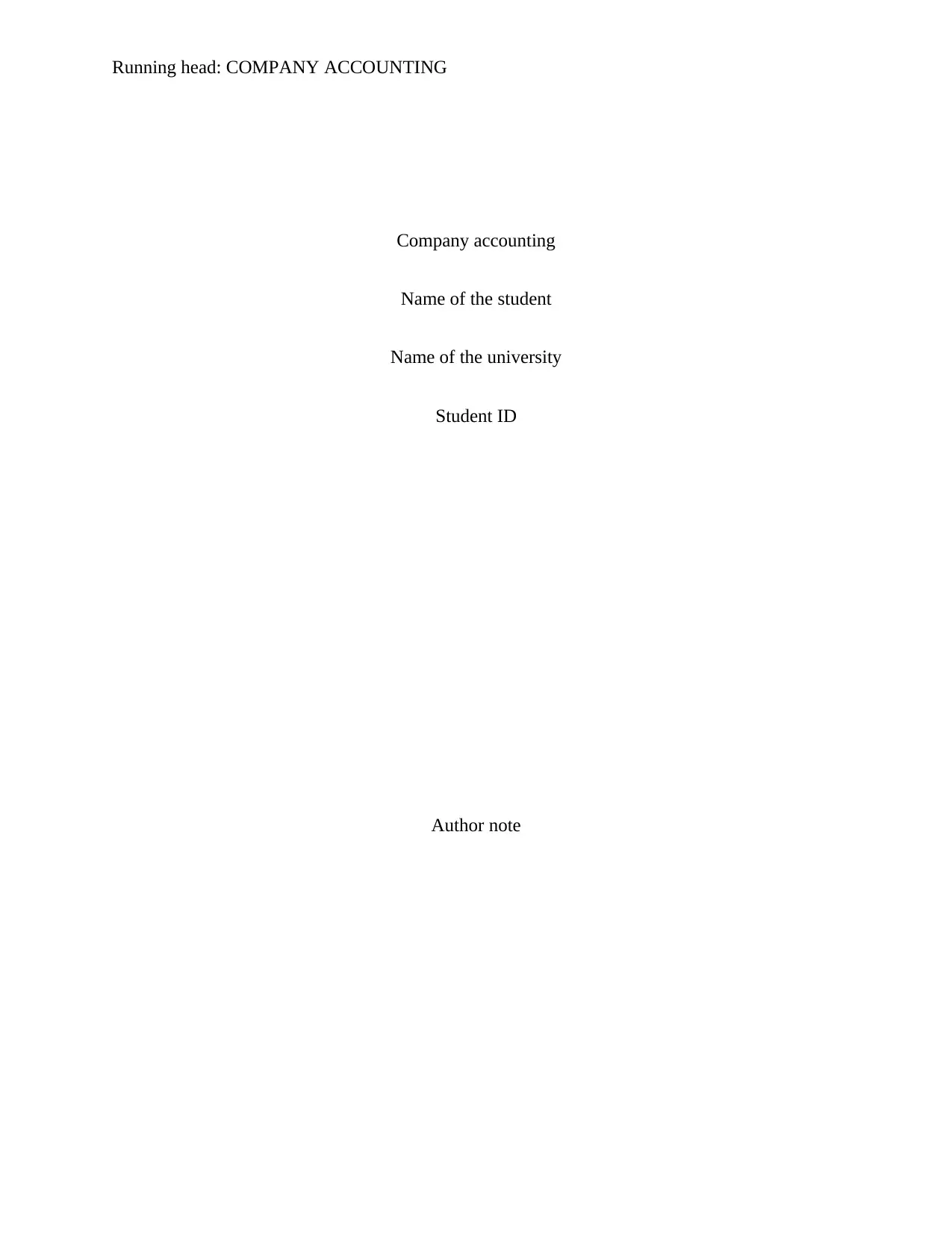
Running head: COMPANY ACCOUNTING
Company accounting
Name of the student
Name of the university
Student ID
Author note
Company accounting
Name of the student
Name of the university
Student ID
Author note
Paraphrase This Document
Need a fresh take? Get an instant paraphrase of this document with our AI Paraphraser
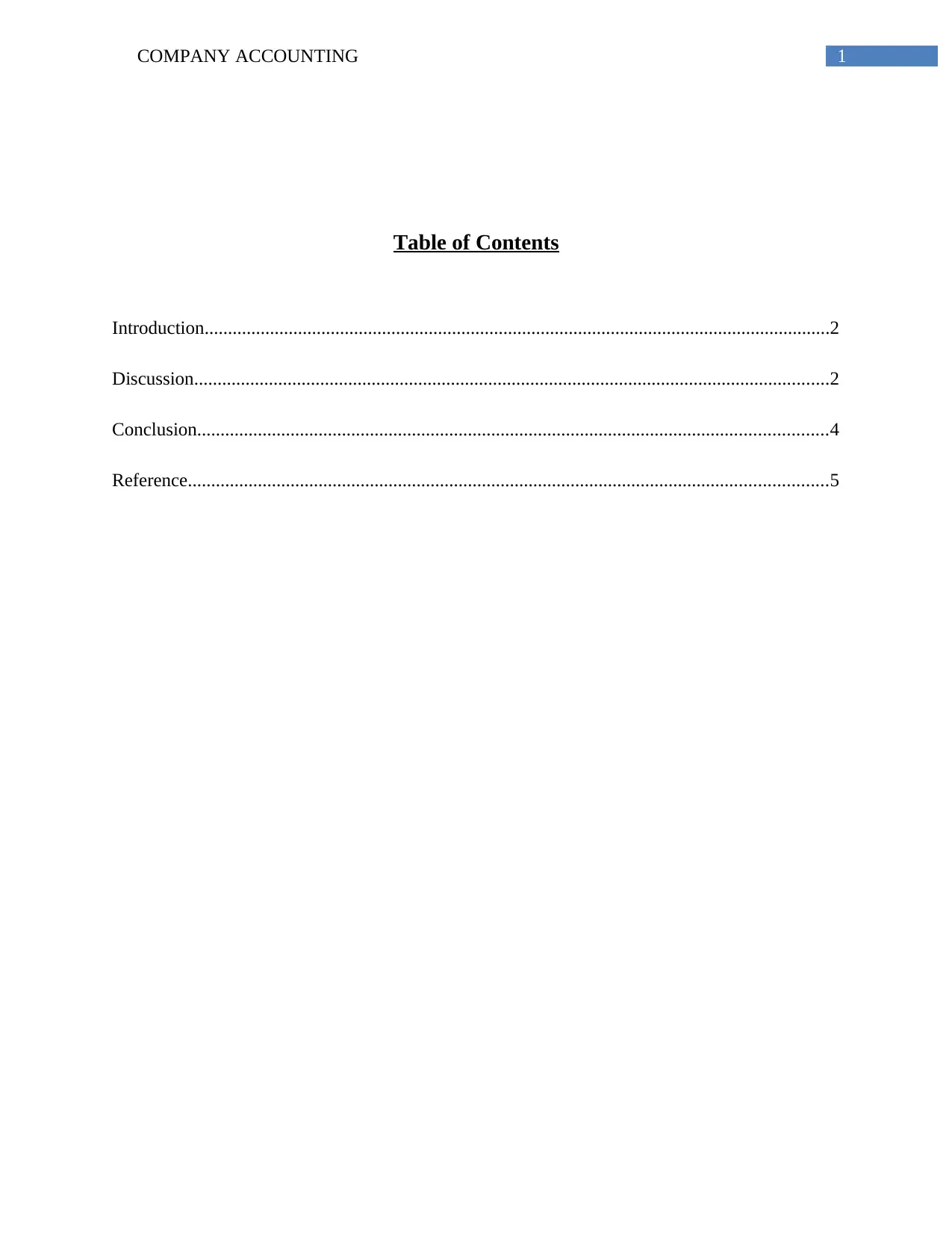
1COMPANY ACCOUNTING
Table of Contents
Introduction......................................................................................................................................2
Discussion........................................................................................................................................2
Conclusion.......................................................................................................................................4
Reference.........................................................................................................................................5
Table of Contents
Introduction......................................................................................................................................2
Discussion........................................................................................................................................2
Conclusion.......................................................................................................................................4
Reference.........................................................................................................................................5
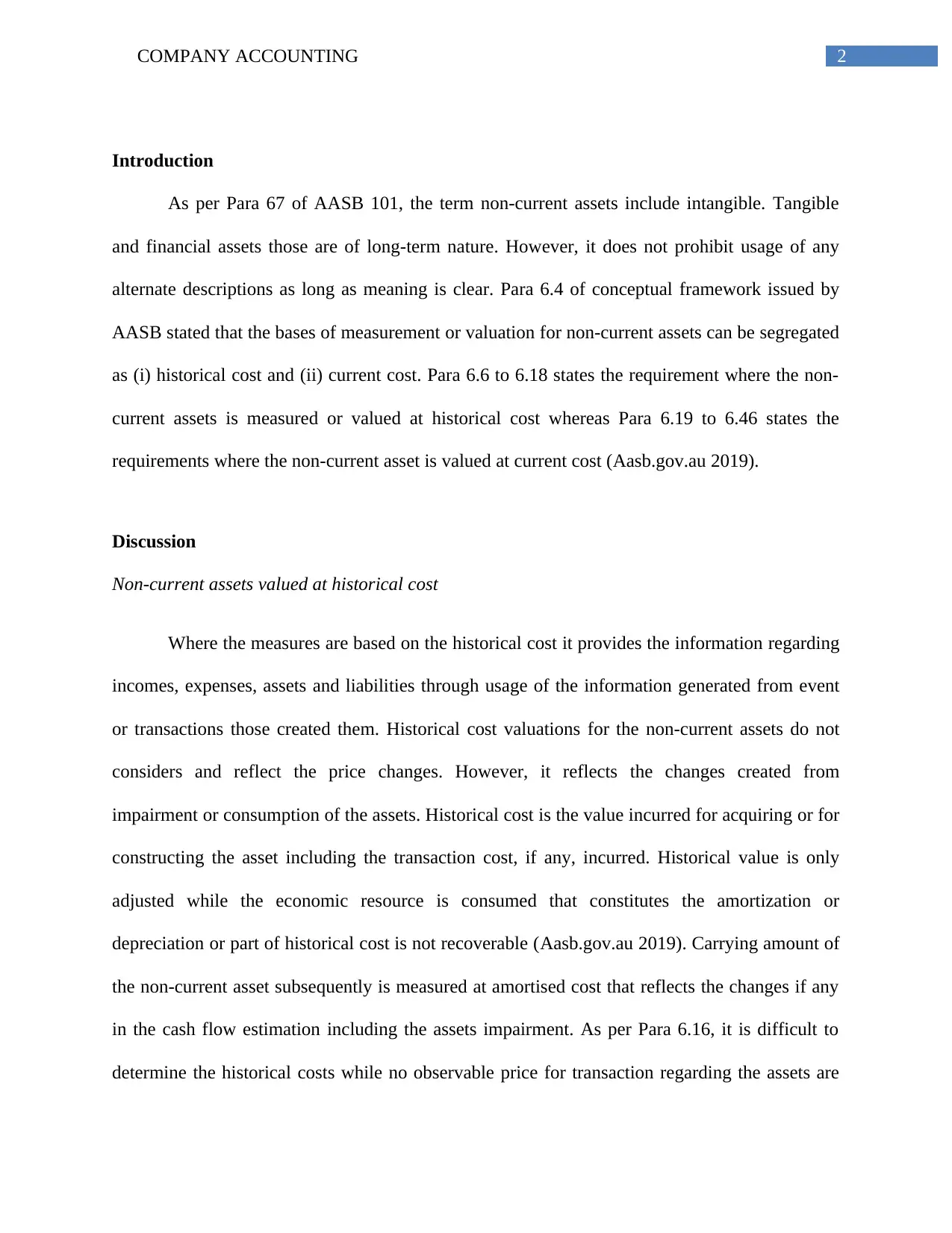
2COMPANY ACCOUNTING
Introduction
As per Para 67 of AASB 101, the term non-current assets include intangible. Tangible
and financial assets those are of long-term nature. However, it does not prohibit usage of any
alternate descriptions as long as meaning is clear. Para 6.4 of conceptual framework issued by
AASB stated that the bases of measurement or valuation for non-current assets can be segregated
as (i) historical cost and (ii) current cost. Para 6.6 to 6.18 states the requirement where the non-
current assets is measured or valued at historical cost whereas Para 6.19 to 6.46 states the
requirements where the non-current asset is valued at current cost (Aasb.gov.au 2019).
Discussion
Non-current assets valued at historical cost
Where the measures are based on the historical cost it provides the information regarding
incomes, expenses, assets and liabilities through usage of the information generated from event
or transactions those created them. Historical cost valuations for the non-current assets do not
considers and reflect the price changes. However, it reflects the changes created from
impairment or consumption of the assets. Historical cost is the value incurred for acquiring or for
constructing the asset including the transaction cost, if any, incurred. Historical value is only
adjusted while the economic resource is consumed that constitutes the amortization or
depreciation or part of historical cost is not recoverable (Aasb.gov.au 2019). Carrying amount of
the non-current asset subsequently is measured at amortised cost that reflects the changes if any
in the cash flow estimation including the assets impairment. As per Para 6.16, it is difficult to
determine the historical costs while no observable price for transaction regarding the assets are
Introduction
As per Para 67 of AASB 101, the term non-current assets include intangible. Tangible
and financial assets those are of long-term nature. However, it does not prohibit usage of any
alternate descriptions as long as meaning is clear. Para 6.4 of conceptual framework issued by
AASB stated that the bases of measurement or valuation for non-current assets can be segregated
as (i) historical cost and (ii) current cost. Para 6.6 to 6.18 states the requirement where the non-
current assets is measured or valued at historical cost whereas Para 6.19 to 6.46 states the
requirements where the non-current asset is valued at current cost (Aasb.gov.au 2019).
Discussion
Non-current assets valued at historical cost
Where the measures are based on the historical cost it provides the information regarding
incomes, expenses, assets and liabilities through usage of the information generated from event
or transactions those created them. Historical cost valuations for the non-current assets do not
considers and reflect the price changes. However, it reflects the changes created from
impairment or consumption of the assets. Historical cost is the value incurred for acquiring or for
constructing the asset including the transaction cost, if any, incurred. Historical value is only
adjusted while the economic resource is consumed that constitutes the amortization or
depreciation or part of historical cost is not recoverable (Aasb.gov.au 2019). Carrying amount of
the non-current asset subsequently is measured at amortised cost that reflects the changes if any
in the cash flow estimation including the assets impairment. As per Para 6.16, it is difficult to
determine the historical costs while no observable price for transaction regarding the assets are
⊘ This is a preview!⊘
Do you want full access?
Subscribe today to unlock all pages.

Trusted by 1+ million students worldwide
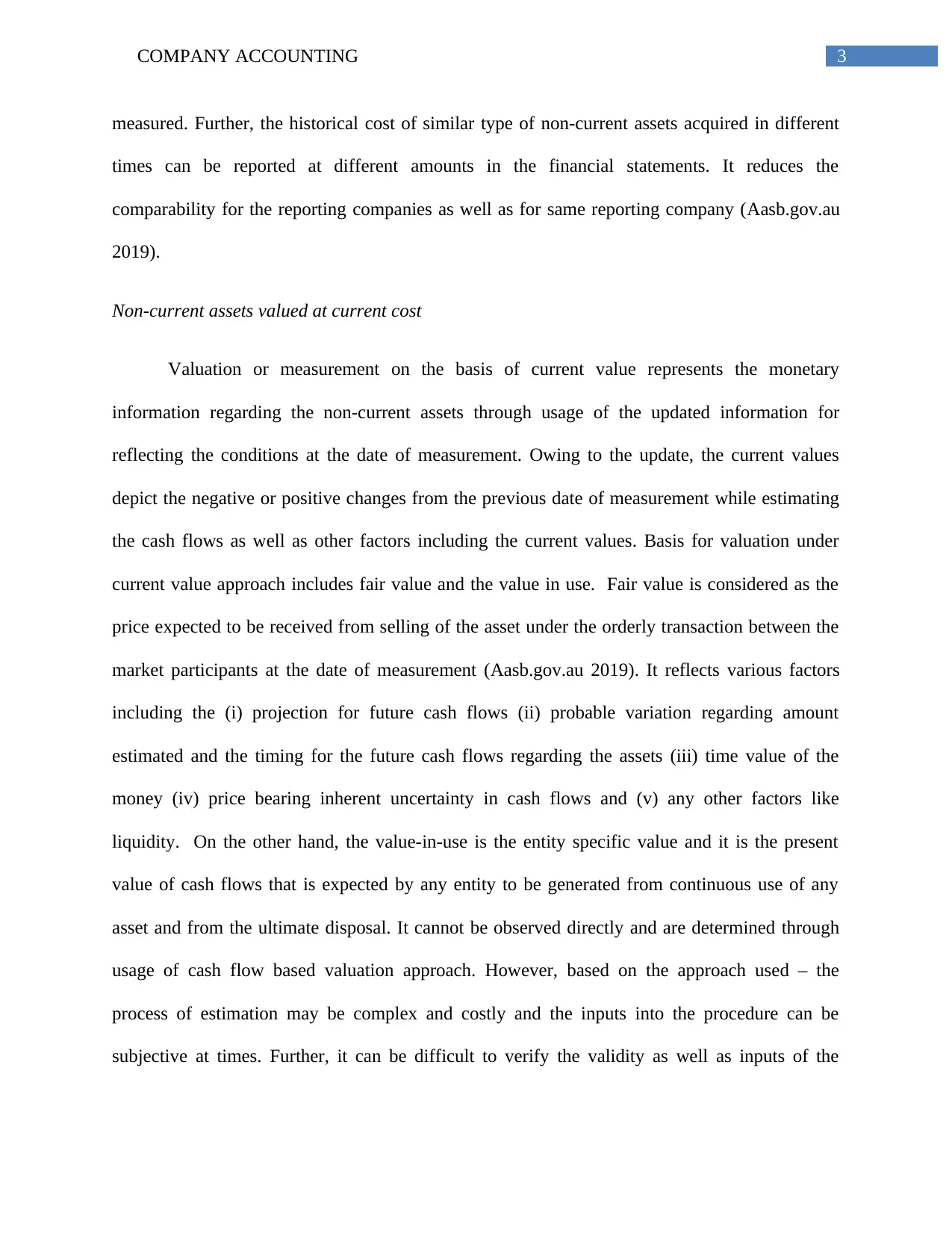
3COMPANY ACCOUNTING
measured. Further, the historical cost of similar type of non-current assets acquired in different
times can be reported at different amounts in the financial statements. It reduces the
comparability for the reporting companies as well as for same reporting company (Aasb.gov.au
2019).
Non-current assets valued at current cost
Valuation or measurement on the basis of current value represents the monetary
information regarding the non-current assets through usage of the updated information for
reflecting the conditions at the date of measurement. Owing to the update, the current values
depict the negative or positive changes from the previous date of measurement while estimating
the cash flows as well as other factors including the current values. Basis for valuation under
current value approach includes fair value and the value in use. Fair value is considered as the
price expected to be received from selling of the asset under the orderly transaction between the
market participants at the date of measurement (Aasb.gov.au 2019). It reflects various factors
including the (i) projection for future cash flows (ii) probable variation regarding amount
estimated and the timing for the future cash flows regarding the assets (iii) time value of the
money (iv) price bearing inherent uncertainty in cash flows and (v) any other factors like
liquidity. On the other hand, the value-in-use is the entity specific value and it is the present
value of cash flows that is expected by any entity to be generated from continuous use of any
asset and from the ultimate disposal. It cannot be observed directly and are determined through
usage of cash flow based valuation approach. However, based on the approach used – the
process of estimation may be complex and costly and the inputs into the procedure can be
subjective at times. Further, it can be difficult to verify the validity as well as inputs of the
measured. Further, the historical cost of similar type of non-current assets acquired in different
times can be reported at different amounts in the financial statements. It reduces the
comparability for the reporting companies as well as for same reporting company (Aasb.gov.au
2019).
Non-current assets valued at current cost
Valuation or measurement on the basis of current value represents the monetary
information regarding the non-current assets through usage of the updated information for
reflecting the conditions at the date of measurement. Owing to the update, the current values
depict the negative or positive changes from the previous date of measurement while estimating
the cash flows as well as other factors including the current values. Basis for valuation under
current value approach includes fair value and the value in use. Fair value is considered as the
price expected to be received from selling of the asset under the orderly transaction between the
market participants at the date of measurement (Aasb.gov.au 2019). It reflects various factors
including the (i) projection for future cash flows (ii) probable variation regarding amount
estimated and the timing for the future cash flows regarding the assets (iii) time value of the
money (iv) price bearing inherent uncertainty in cash flows and (v) any other factors like
liquidity. On the other hand, the value-in-use is the entity specific value and it is the present
value of cash flows that is expected by any entity to be generated from continuous use of any
asset and from the ultimate disposal. It cannot be observed directly and are determined through
usage of cash flow based valuation approach. However, based on the approach used – the
process of estimation may be complex and costly and the inputs into the procedure can be
subjective at times. Further, it can be difficult to verify the validity as well as inputs of the
Paraphrase This Document
Need a fresh take? Get an instant paraphrase of this document with our AI Paraphraser
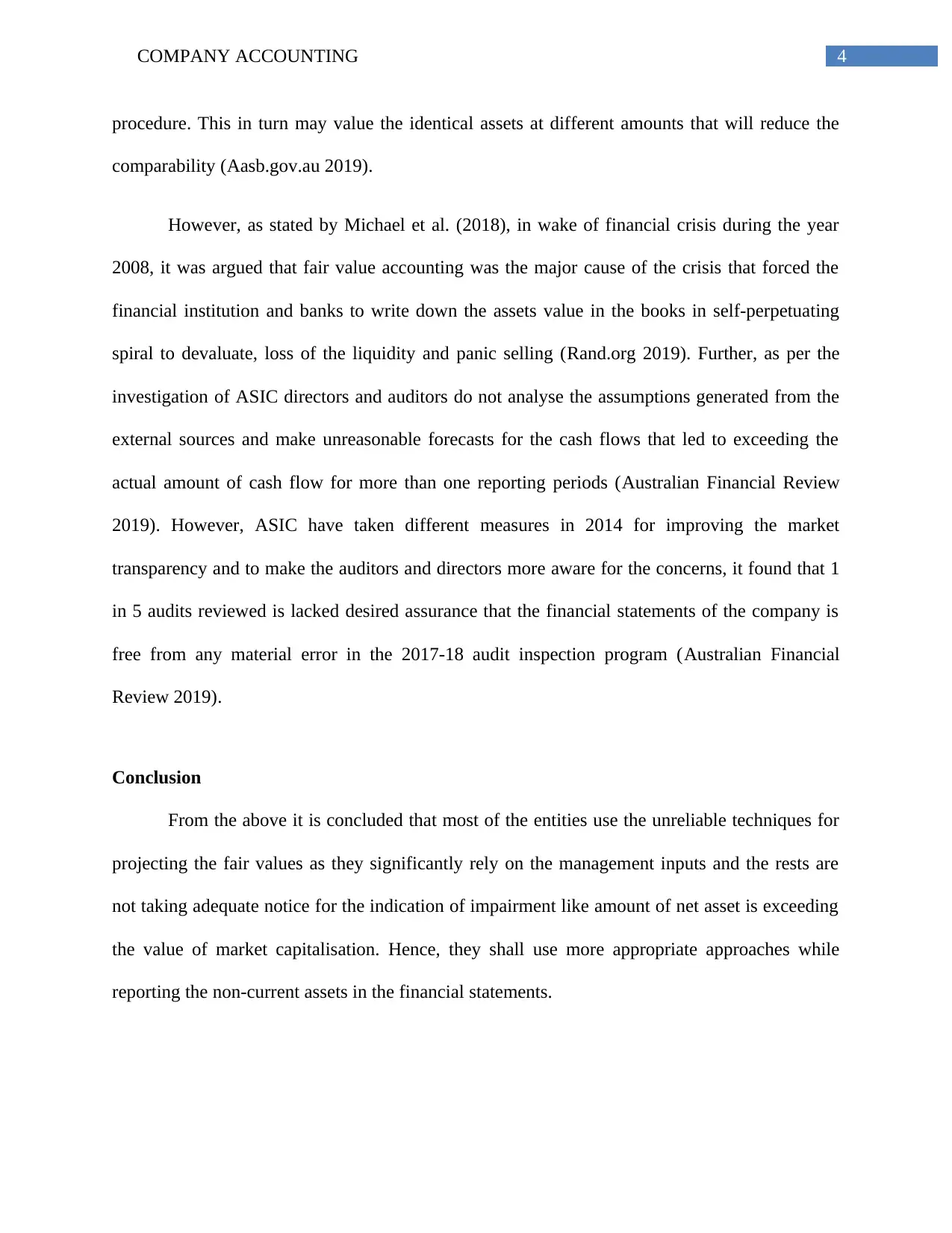
4COMPANY ACCOUNTING
procedure. This in turn may value the identical assets at different amounts that will reduce the
comparability (Aasb.gov.au 2019).
However, as stated by Michael et al. (2018), in wake of financial crisis during the year
2008, it was argued that fair value accounting was the major cause of the crisis that forced the
financial institution and banks to write down the assets value in the books in self-perpetuating
spiral to devaluate, loss of the liquidity and panic selling (Rand.org 2019). Further, as per the
investigation of ASIC directors and auditors do not analyse the assumptions generated from the
external sources and make unreasonable forecasts for the cash flows that led to exceeding the
actual amount of cash flow for more than one reporting periods (Australian Financial Review
2019). However, ASIC have taken different measures in 2014 for improving the market
transparency and to make the auditors and directors more aware for the concerns, it found that 1
in 5 audits reviewed is lacked desired assurance that the financial statements of the company is
free from any material error in the 2017-18 audit inspection program (Australian Financial
Review 2019).
Conclusion
From the above it is concluded that most of the entities use the unreliable techniques for
projecting the fair values as they significantly rely on the management inputs and the rests are
not taking adequate notice for the indication of impairment like amount of net asset is exceeding
the value of market capitalisation. Hence, they shall use more appropriate approaches while
reporting the non-current assets in the financial statements.
procedure. This in turn may value the identical assets at different amounts that will reduce the
comparability (Aasb.gov.au 2019).
However, as stated by Michael et al. (2018), in wake of financial crisis during the year
2008, it was argued that fair value accounting was the major cause of the crisis that forced the
financial institution and banks to write down the assets value in the books in self-perpetuating
spiral to devaluate, loss of the liquidity and panic selling (Rand.org 2019). Further, as per the
investigation of ASIC directors and auditors do not analyse the assumptions generated from the
external sources and make unreasonable forecasts for the cash flows that led to exceeding the
actual amount of cash flow for more than one reporting periods (Australian Financial Review
2019). However, ASIC have taken different measures in 2014 for improving the market
transparency and to make the auditors and directors more aware for the concerns, it found that 1
in 5 audits reviewed is lacked desired assurance that the financial statements of the company is
free from any material error in the 2017-18 audit inspection program (Australian Financial
Review 2019).
Conclusion
From the above it is concluded that most of the entities use the unreliable techniques for
projecting the fair values as they significantly rely on the management inputs and the rests are
not taking adequate notice for the indication of impairment like amount of net asset is exceeding
the value of market capitalisation. Hence, they shall use more appropriate approaches while
reporting the non-current assets in the financial statements.
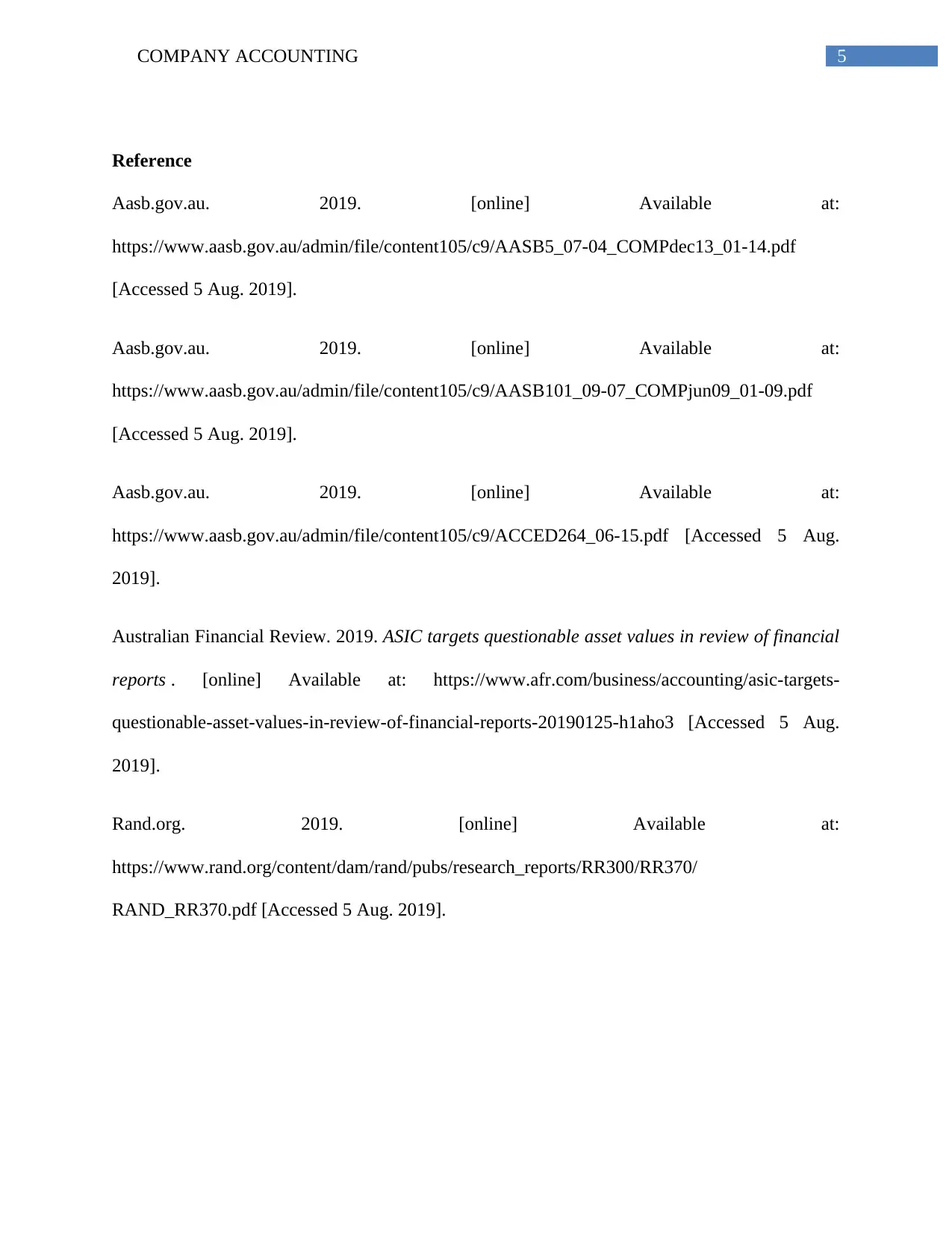
5COMPANY ACCOUNTING
Reference
Aasb.gov.au. 2019. [online] Available at:
https://www.aasb.gov.au/admin/file/content105/c9/AASB5_07-04_COMPdec13_01-14.pdf
[Accessed 5 Aug. 2019].
Aasb.gov.au. 2019. [online] Available at:
https://www.aasb.gov.au/admin/file/content105/c9/AASB101_09-07_COMPjun09_01-09.pdf
[Accessed 5 Aug. 2019].
Aasb.gov.au. 2019. [online] Available at:
https://www.aasb.gov.au/admin/file/content105/c9/ACCED264_06-15.pdf [Accessed 5 Aug.
2019].
Australian Financial Review. 2019. ASIC targets questionable asset values in review of financial
reports . [online] Available at: https://www.afr.com/business/accounting/asic-targets-
questionable-asset-values-in-review-of-financial-reports-20190125-h1aho3 [Accessed 5 Aug.
2019].
Rand.org. 2019. [online] Available at:
https://www.rand.org/content/dam/rand/pubs/research_reports/RR300/RR370/
RAND_RR370.pdf [Accessed 5 Aug. 2019].
Reference
Aasb.gov.au. 2019. [online] Available at:
https://www.aasb.gov.au/admin/file/content105/c9/AASB5_07-04_COMPdec13_01-14.pdf
[Accessed 5 Aug. 2019].
Aasb.gov.au. 2019. [online] Available at:
https://www.aasb.gov.au/admin/file/content105/c9/AASB101_09-07_COMPjun09_01-09.pdf
[Accessed 5 Aug. 2019].
Aasb.gov.au. 2019. [online] Available at:
https://www.aasb.gov.au/admin/file/content105/c9/ACCED264_06-15.pdf [Accessed 5 Aug.
2019].
Australian Financial Review. 2019. ASIC targets questionable asset values in review of financial
reports . [online] Available at: https://www.afr.com/business/accounting/asic-targets-
questionable-asset-values-in-review-of-financial-reports-20190125-h1aho3 [Accessed 5 Aug.
2019].
Rand.org. 2019. [online] Available at:
https://www.rand.org/content/dam/rand/pubs/research_reports/RR300/RR370/
RAND_RR370.pdf [Accessed 5 Aug. 2019].
⊘ This is a preview!⊘
Do you want full access?
Subscribe today to unlock all pages.

Trusted by 1+ million students worldwide
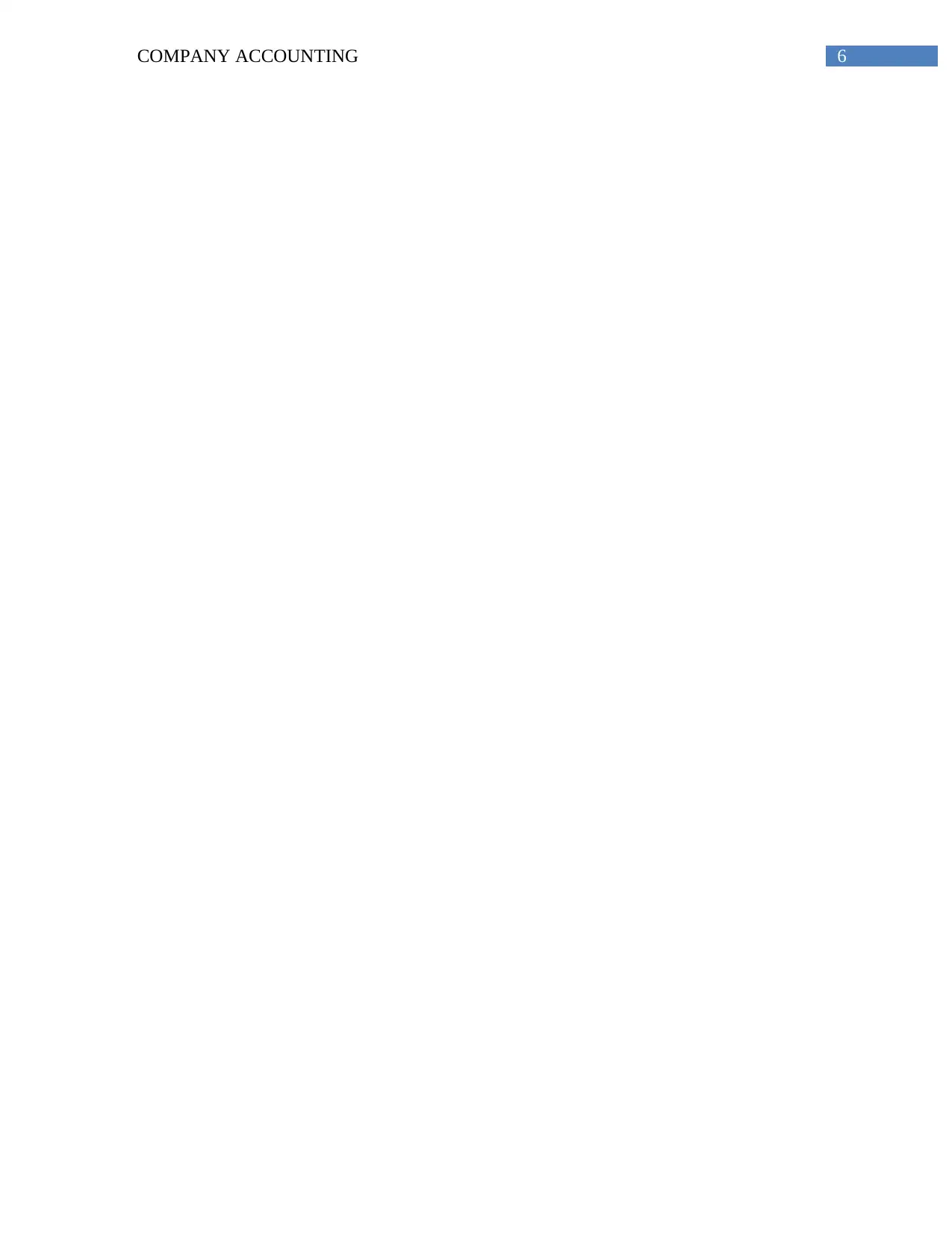
6COMPANY ACCOUNTING
1 out of 7
Related Documents
Your All-in-One AI-Powered Toolkit for Academic Success.
+13062052269
info@desklib.com
Available 24*7 on WhatsApp / Email
![[object Object]](/_next/static/media/star-bottom.7253800d.svg)
Unlock your academic potential
Copyright © 2020–2025 A2Z Services. All Rights Reserved. Developed and managed by ZUCOL.





